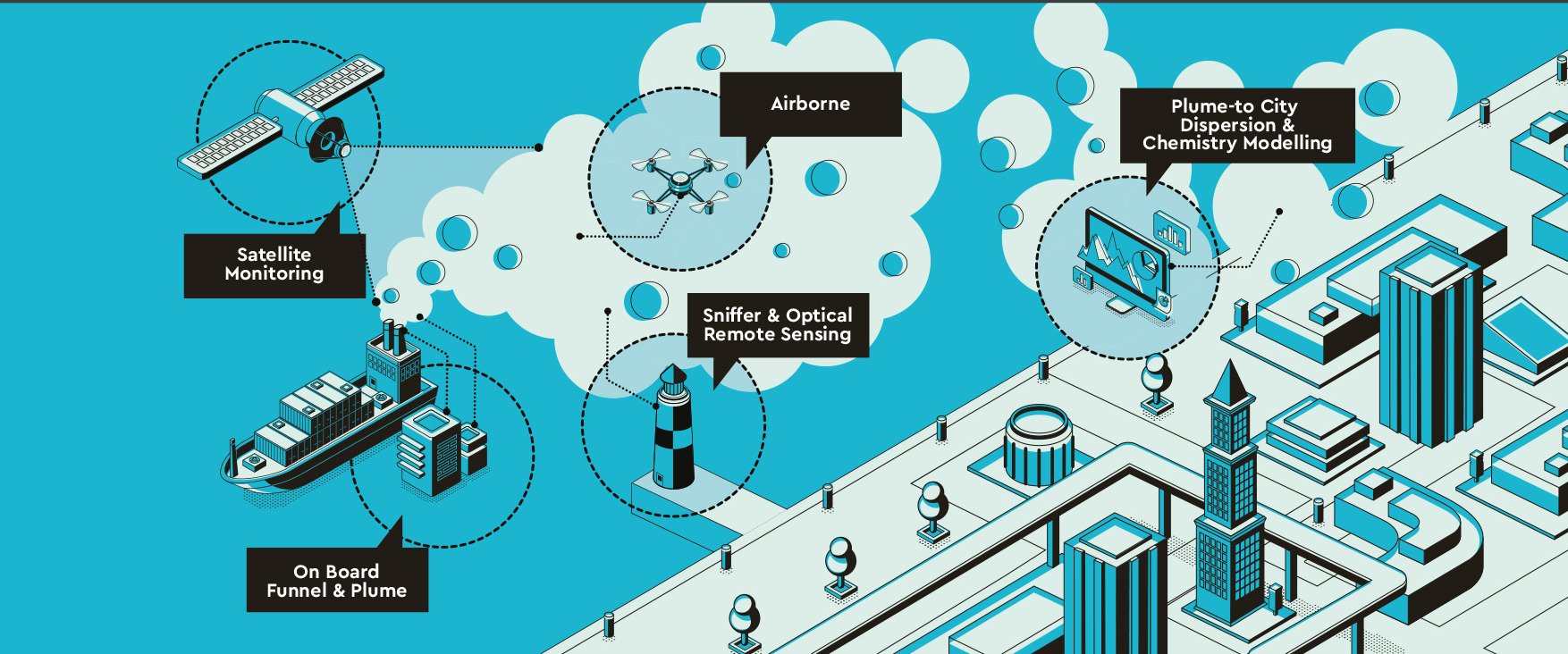Project Description
Project Goals:
Demonstrate the performance and capacity of various techniques for monitoring ship emissions and assess the impact of ship emissions on air quality.
Objectives:
Developing a cost-effective on-board sensor system and monitoring center to monitor ship emissions and compliance with applicable regulations. Modern measurement techniques are used to monitor ship emissions under normal operations, including sniffers, satellites, drones, and on-board systems to determine fuel consumption, emissions, and shore-based measurements. These techniques will be tested for their performance in verifying and enforcing regulations on ship emissions. Measurement campaigns are being conducted in five European ports, including France, Germany, the United Kingdom and Sweden. Mirror activities in Asia will be used to evaluate the results obtained in the EU.
Problem:
In 1997, the International Maritime Organization IMO adopted MARPOL Annex VI (MARPOL: International Convention for the Prevention of Pollution from Ships), which stipulates the reduction of permissible emissions of sulfur oxide (SOx), nitrogen oxides (NOx) and soot particles in ship exhaust. Air and climate pollution from shipping must therefore fall significantly. From 2020, the sulfur content in ship exhaust gases is to be reduced to 0.5 percent globally. The administration is to monitor this. Technically and economically viable solutions for this controlling are lacking.
Role of the CML in SCIPPER:
The CML has developed an on-board sensor box adapted to the challenges on seagoing vessels for various measurement tasks. As part of the SCIPPER project, this will be equipped with a measurement sensor system for determining nitrogen and sulfur emissions. Depending on its positioning on the ship, the sensor box allows the measurement of components of the ship's exhaust gases of the respective ship as well as background values, such as emissions from neighboring ships.
Project Consortium:
SCIPPER is funded by the European Union as part of the Horizon 2020 research program with grant agreement No. 814893 with EUR 5.06 million in the period from May 2019 to May 2022.
Projectpartners:
Aristotle University thessaloniki, Helmholtz-Zentrum Geesthacht, Tampere University (TAU), IVL Swedish Environmental Research Institute, Chalmers University of Technology, TNO Netherlands Research Institute for Applied Scientific Research, Finnish Meteoroligical Institute (FMI), Helmholtz-Zentrum München, Plymouth Marine Laboratory (PML), Exact Earth Europe Limited (EEE), German Maritime and Hydrographic Agency (BSH), Atmosud, Aix Marseille Université (AMU), Explicit APS, Aeromon OY, Netherlands Inspectorate of Transport and Environment (ILT), Hong Kong University of Science and Technology (HKUST)
 Fraunhofer Center for Maritime Logistics and Services
Fraunhofer Center for Maritime Logistics and Services
